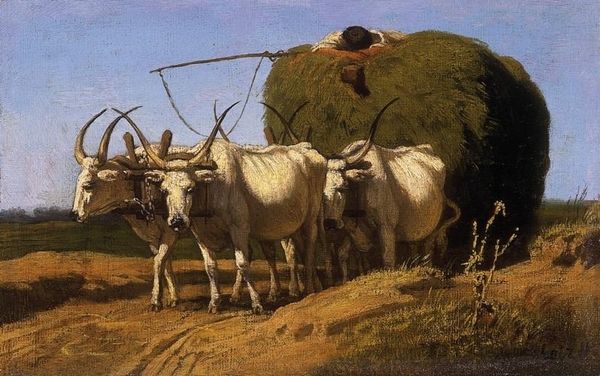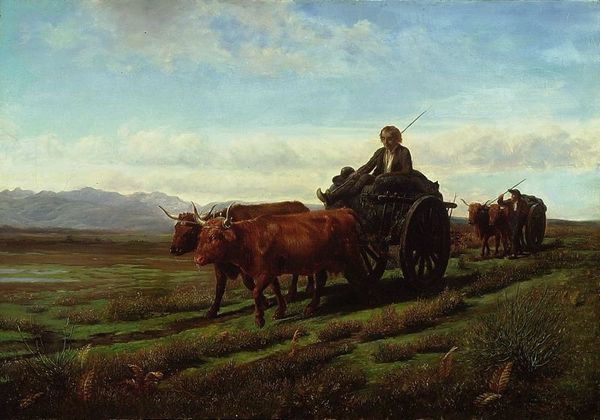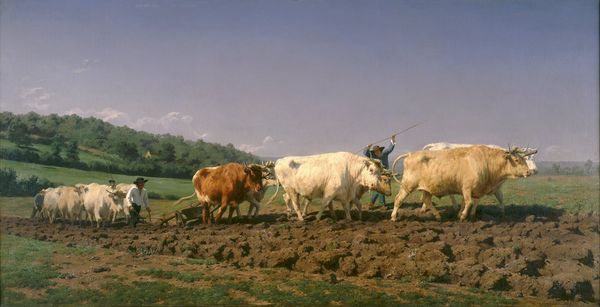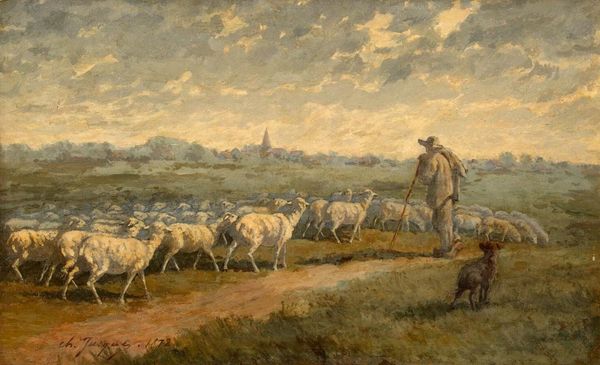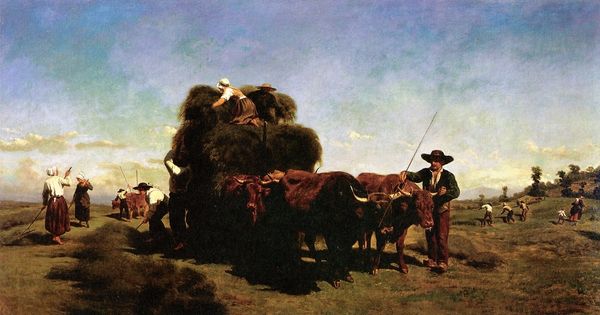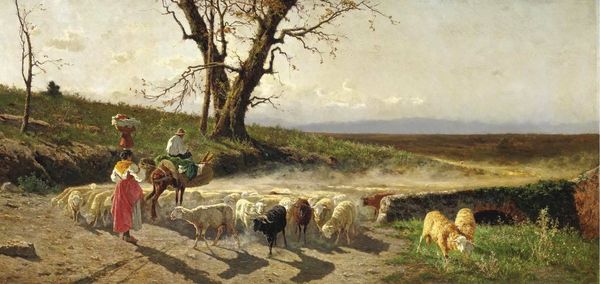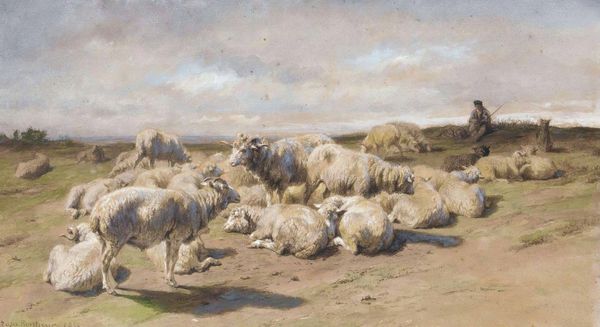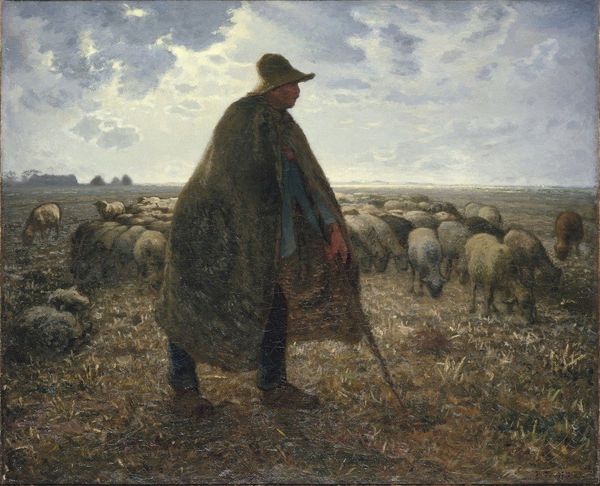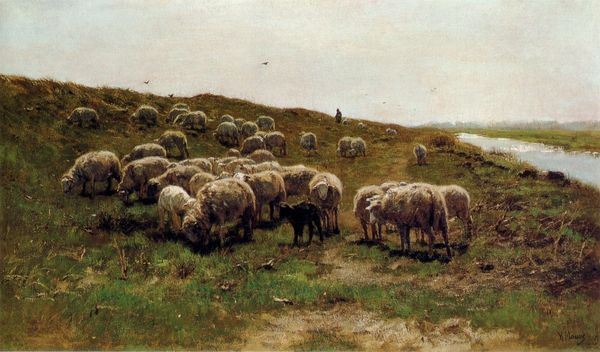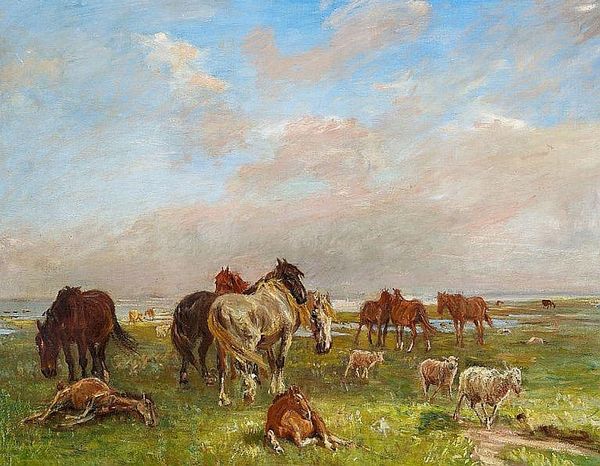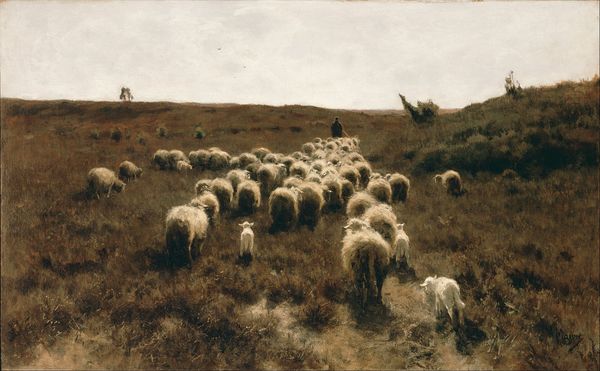
painting, oil-paint
#
narrative-art
#
painting
#
oil-paint
#
landscape
#
oil painting
#
romanticism
#
genre-painting
#
realism
Copyright: Public domain
Editor: Here we have Károly Lotz’s “Ploughing at Spring,” an oil painting that depicts rural life. The neutral palette gives it a somewhat somber, subdued feel despite the activity. What is your interpretation of the scene depicted in the artwork? Curator: It's interesting you picked up on that subdued tone. On the surface, we see pastoral labor, but consider the social context. Rural life in that era, even presented through a romantic lens, often masked harsh realities of class struggle and land ownership. This image may speak to the inherent difficulties that shaped many lives, but also the relationship between man, the land, and the labor. Editor: The size and strength of the animals are certainly the main focus. How might their size play into these class struggles you mention? Curator: Precisely. The animals signify power, both literally in their ability to plough, and figuratively as the engine for societal productivity at the time. Ask yourself: who owns these animals? Who profits from their labor? Lotz subtly hints at this relationship. The vast fields stretching beyond the frame are testament to potential, but that potential is tethered to land ownership and economic disparity. How does this relate to current issues of labor? Editor: That makes me consider the relationship between agriculture and global economics. Food production on the scale that is expected by the West has become so reliant on exploitation of both the workers and land. Curator: Exactly. And while this painting may be specific to its time and place, these themes of labor, exploitation, and relationship to the earth, are so very relevant today. It really makes you think. Editor: It certainly does. Thanks for helping me unpack this. Curator: My pleasure. It is through these dialogues that we enrich our understanding of the artwork in context and make it applicable to our lives today.
Comments
No comments
Be the first to comment and join the conversation on the ultimate creative platform.
